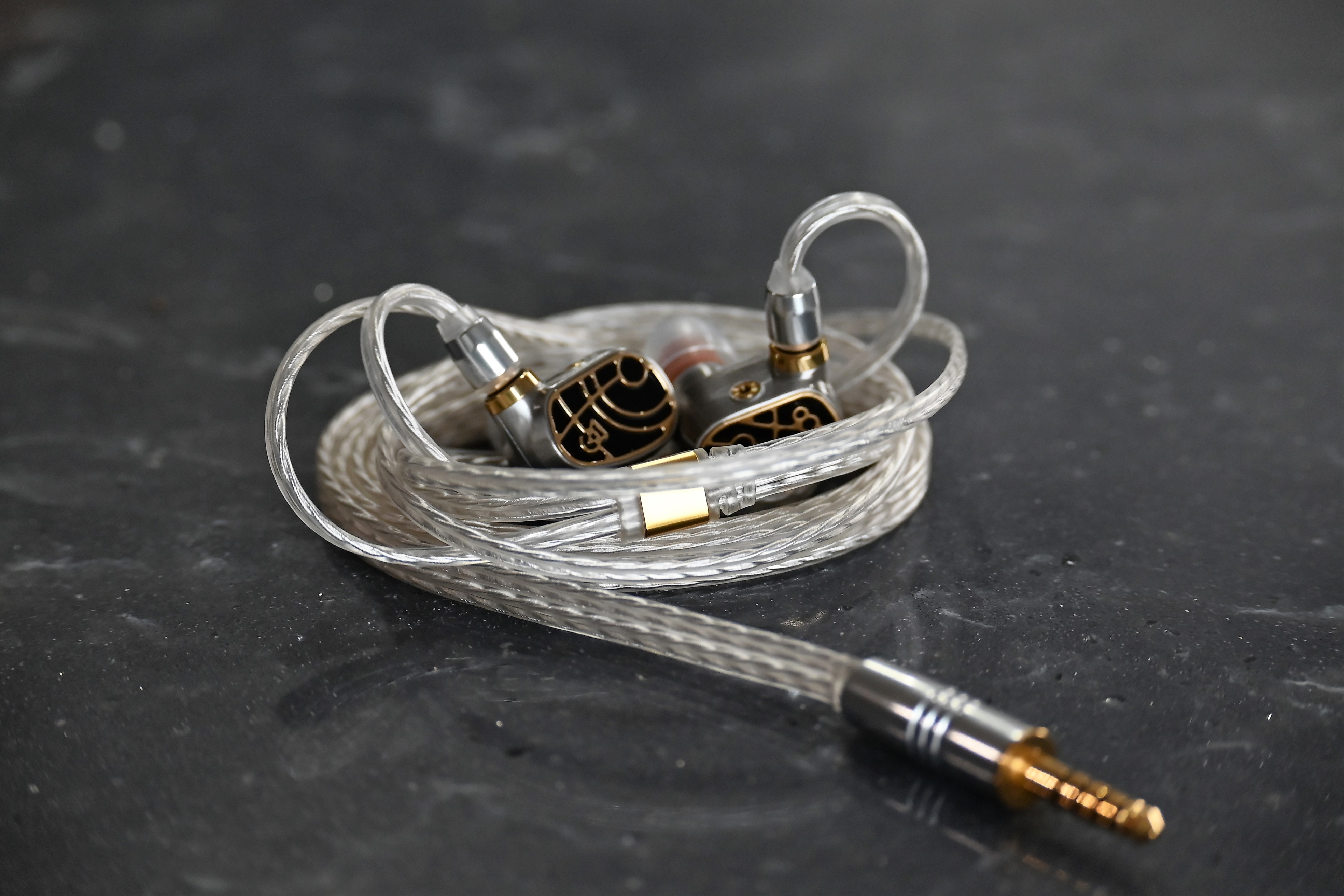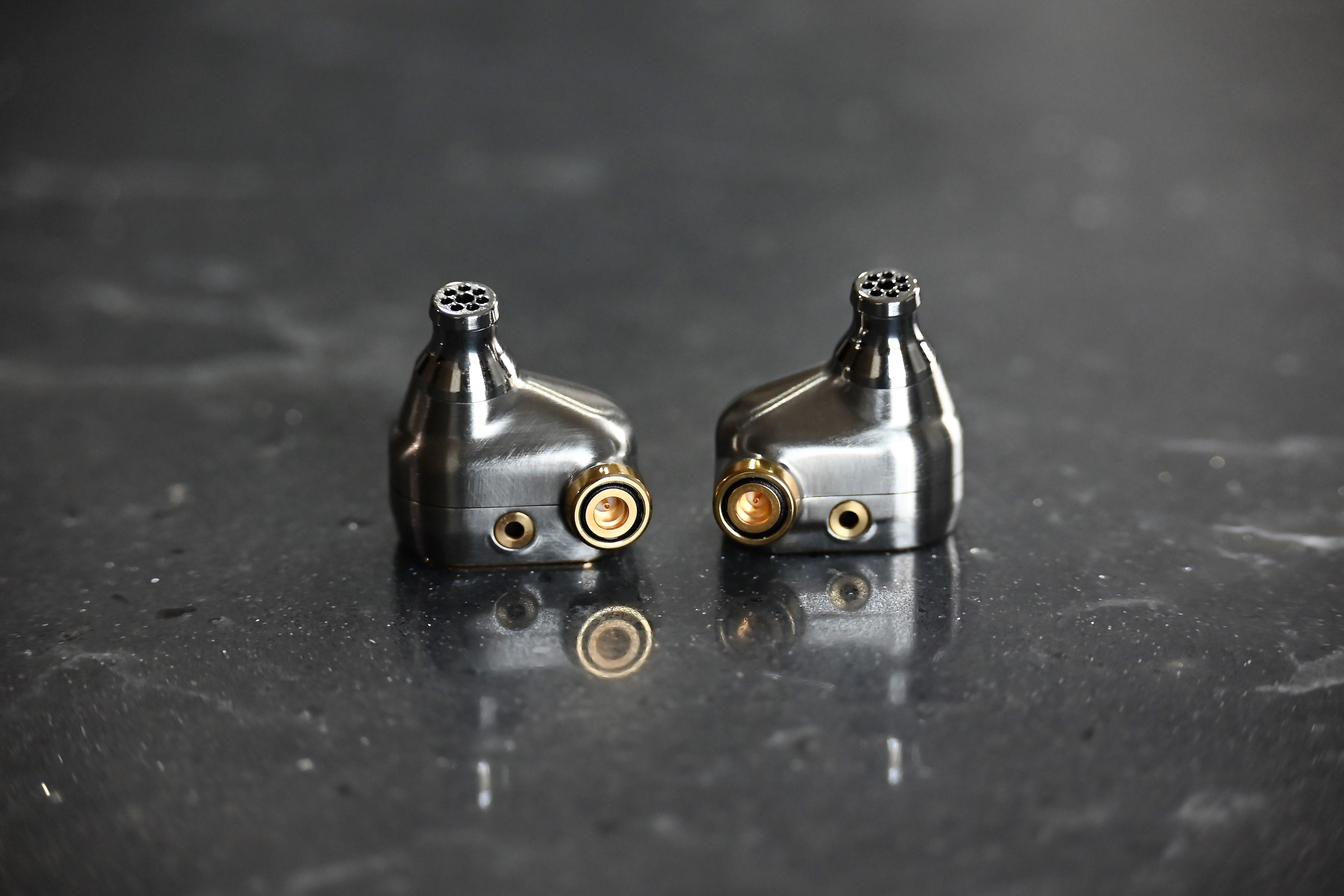Campfire knocks another IEM over the Horizon
Pros: Very well-balanced IEM
Lightweight
Gorgeous/good Build Quality
Awesome Packaging/Accessories
Good sounding cable
Great Mids
Great Lows
Good Highs
Cons: Cold – no really
Too many cables
Pricey
A little uncomfortable
Sibilance

Overview:
Up for review today is the gorgeous Campfire Audio Solaris Stellar Horizon – which I will refer to as the SSH or Stellar Horizon because that name is way too long. The SSH has 3 BAs, and 10mm 1 DD on bass duty. As always with Campfire, they manage to get some crazy good sound from a small IEM with a small number of drivers. Considering that most companies now use 10+ drivers in each ear for their high-end IEMs, 4 is just great. The Solaris itself has gone through so many revisions and special editions, it’s hard to keep track – and these are the most expensive at $2,670 retail, so how do these stack up to their older siblings?

Accessories/Earpads/Eartips (10/10):
Awesome as usual. I mean it. Sure, it’s not all necessary, but when you are paying this kind of money a set of tiny headphones, you really want to be treated and Campfire takes it to the next level at making you feel special. It’s the same packaging as the Trifecta essentially with the wooden box and the hand, several types of ear tips to choose from, a “birth certificate,” trading card, serialized numbers, etc. You also get 3 cables, and 3 cases (1 for cables, one for the IEM, and one carrying case) – see the photos for all the swag. Everything is sustainable and environmentally friendly – no plastic or anything to murder the plant. So yeah, this is what I consider a 10/10 – no bare minimum here. As always, I’m using my Spinfit W1 tips since they’re the best I’ve found (You can buy them here if you want a set: https://amzn.to/3WDrNIk.)

Cable (8/10):
The cables are the same as with the Trifecta – oddly, there are still 3 of them. I have to say that I still don’t need 3 of the Time Stream cables – no one uses 2.5mm balanced cables anymore – 4.4mm is the gold standard. Also, anyone buying a $2,600 IEM owns a DAP or amp with a 4.4mm output. So the 3.5mm is also unnecessary and could have saved both Campfire and the buyer $100-200 on the price. I also find the cables to be good quality, with good sound, and super annoying. Why? Because my brain hates when they aren’t perfectly straight since it’s a flat ribbon cable. Also, it’s a little too long, so it gets in the way of everything short of sitting at my desk. Kneeled down to pick something up? Catches on my knee, pants, cabinet handle, dog leash, etc. Super annoying – I constantly found myself tucking it into the pocket on my hoodie, which was also annoying since it’s a pretty stiff cable. So yes, good quality, but kind of annoying. 8/10 points.

Build Quality/Comfort (8/10):
The Stellar Horizon are brushed stainless steel for the body with a form of acrylic called PVD for the faceplate inlaid with gold and MMCX brass connectors. It’s a really fantastic look without adding too much weight. It honestly has better build quality than the Trifecta since it doesn’t have the Nylon bubbles that I didn’t like with the Trifecta. So yeah, very good build quality.
The comfort is a little wonky, but these are very small IEMs – Solaris 2020 size, and more comfortable than the Andromeda, but not quite the Trifecta. Overall, they’re very light for an IEM with a metal body, right around Rn6 level of weight. These actually get cold, which is a bit awkward when you put them in the first time – it’s not a big deal, but it is unusual to experience. The fit is also a little bit wonky since you kind of have to rotate them up a bit to get them to sit comfortably. Again, not a deal breaker, but certainly something to mention – overall, these are small, light, and comfy. The score here is a 9/10 points for the cold/fit that needs adjustment and some may not like.

Sound:
Check out the Wolfhawk.Squig.Link below to see how these measure compared to a couple of other IEMs you might want to compare them to. Obviously, it has less bass than the Trifecta and Rn6 – it’s not really trying to compete with those in that department. Still, the sound is quite balanced and neutral overall. The mids are more pronounced than the Trifecta and Rn6 while the highs look like a 4-year-old’s scribbles as usual. Read the test songs to see what those scribbles mean.

I am powering these off of my Cayin N8ii on medium gain with the solid-state amp at around ~30/100 volume using the balanced 4.4mm connection and Tidal Hi-Fi Plus with MQA enabled.

Lows (18/20):
I’m starting off with the Mid-bass/Sub-bass test I’m using David Guetta’s “I’m Good (Blue).” There are some really fantastic bass drums and sub-bass here. It’s nothing like the Trifecta, but it feels like cleaner quality with less quantity. It doesn’t have the unwanted extra reverb that some bassier IEMs, especially DD ones, can have on this song. The sub-bass won’t melt your face by any stretch of the imagination, but it’s strong enough to feel it. This is a very different presentation from the old Solaris, which was pretty light on bass. I love it, 10/10 points here.
Up next is Demon Hunter’s “I Am A Stone,” which I use to test whether the bass is too strong and overwhelms the mids as that is just as important as how strong/good the bass is. The bass comes in strongly in the background and only occasionally overwhelms the mids. It doesn’t have the Rn6’s magic ability to separate stronger lows from the mids, but it gets as close as any other IEM with good bass response I’ve heard. 8/10 points here.
Mids (18/20):
Weaving The Fate’s “The Fall” is my test song for clean/dirty guitars and vocals with background instruments to see how clearly the vocals can be heard. The clean intro guitar is detailed and full-bodied while the distorted guitars are fantastic and the cymbals and drums can both be clearly heard above and below the guitars. The vocals sound great and are more forward than on other IEMs. The biggest downside here is one I can’t mark off here, and that’s sibilance in the vocals, which isn’t overwhelmingly noticeable, but still noticeable. Still, the song itself earns a 6/6 because it sounds great on the Stellar Horizon and the sibilance will get marked off later in the highs.
Staind’s “Something to Remind You” has clean electric guitars and wonderful vocals – this song tests vocal quality and background noise. The guitars and vocals here sound great. There’s a large soundstage and good instrument separation that is easily discernable in layers. The lows can cut into the mids just a little here, but the overall presentation is very good without any unwanted reverb. 6/7 points here.
To test classical instruments in the mids, I’m using The Piano Guys’ “Code Name Vivaldi.” The bass-cello is full-bodied with excellent depth and the piano comes in clearly if a bit muted by the bass. Later on, the piano takes the front stage and can be heard quite easily over the bass. The mid-cellos sound good throughout the entire song. The Stellar Horizon definitely brings more emotion to this song than IEMs like the Jewel, but not as much as something like the Trifecta or Traillii. 6/7 points here.
Highs (16/20):
To test sibilance on headphones I use Panic! At The Disco’s “High Hopes.” Yeah, you already know this is going to lose points here. Some brutal sibilance. It’s definitely below average and really makes the Andromeda appealing due to how much sibilance it has – but only if you’re sibilant sensitive. The Andromeda has a lot less detail and is a warmer, mushier sound. This is almost as bad as the Trifecta – 2/6 points.
Dream Theater’s “The Alien,” is the highs test song I use to see if the cymbals/high-hats/snare drum can be clearly heard and distinguished from the rest of the music (also good for instrument separation.) Of course, sibilance and excellent highs performance almost seem to go hand in hand and the Stellar Horizon is no exception. These are some of the most detailed highs I’ve heard, they’re quieter than the Trifecta, but just as, if not more, detailed. 7/7 points here.
Michelle McLaughlin’s “Across The Burren” is another of my favorite highs/sharpness test songs as it can easily sound painful on some headphones. Just like the Trifecta, I’m not encountering any sharpness here. The sibilance is the only weakness in the highs on both IEMs. 7/7 points – this sound beautiful.
Soundstage/Instrument Separation/Imaging (8/10):
I use MGMT’s “Time to Pretend” to test soundstage, instrument separation, and imaging. The Stellar Horizon was tuned brilliantly and the venting built into it really opens up the soundstage for some truly tiny IEMs. The Rn6 and these are very close in soundstage (3/3), and Imaging (3/3). The big weakness here is the instrument separation with the bass as I’ve already mentioned. Occasionally, it bleeds into the mids, so it’s a 2/3 points there sadly and it doesn’t quite earn the extra point.

Comparisons:
I’ve already compared these to several IEMs above, but the most likely comparison you’re looking for is against the Trifecta. Compared to the Trifecta, both have similar highs performances. The bass is more pronounced on the Trifecta, but it comes at a slightly muddier cost and a similar issue with too much bass on occasion. The mids on both the Trifecta and Stellar Horizon are pretty close quality-wise, though the Trifecta has more “soul.” That’s the biggest difference between these two, the Stellar Horizon is the safer tuning, but it sounds less magical as a result. Both are excellent, but I’d still pick the Trifecta for some intangible reason.
The Rn6 is more flexible with its swappable modules and it’s a very balanced IEM with a magical instrument separation ability. It’ll run you the same amount as the Trifecta though and I’d stick with the Trifecta from personal preference even though the Rn6 scores higher. The Stellar Horizon and the Rn6 are surprisingly similar, though the SH has much nicer packaging and no modules. Both are well-balanced IEMs with a metal chassis. Obviously, you can tune the Rn6 to be Trifecta bassy (or higher), while the SH is a bit of a one-trick pony, but it does that one trick very well and should sound good with most music. Also, it’s $700 cheaper – nothing to sneeze at. Oh, and I prefer it to the Solaris 2020 in case you’re wondering.

Conclusion:
The Stellar Horizon is another excellent IEM from Campfire. If you can’t afford the Trifecta, but want a similar presentation with less bass and more pronounced mids, the new Solaris should definitely be on your list. This doesn’t have the Trifecta’s intangible “soul,” but it does a really good job of getting close while having a more premium shell and a more balanced sound with less unwanted reverberation as well. It reminds me a lot of the Rn6 with the Red module, a well-balanced IEM that does just about everything well, just watch out for the sibilance.
| Headphone Scoring (v3): | |
| Accessories / Earpads / Eartips (10 pts): | 10 |
| Cable (10 pts): | 8 |
| Build Quality/ Design / Comfort (10 pts): | 8 |
| Lows (20 pts): | 18 |
| Mids (20 pts): | 18 |
| Highs (20 pts): | 16 |
| Soundstage / Instrument Separation / Imaging (10 pts): | 8 |
| Total: | 86 |


